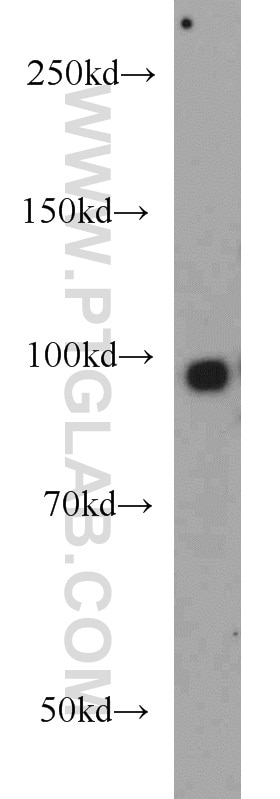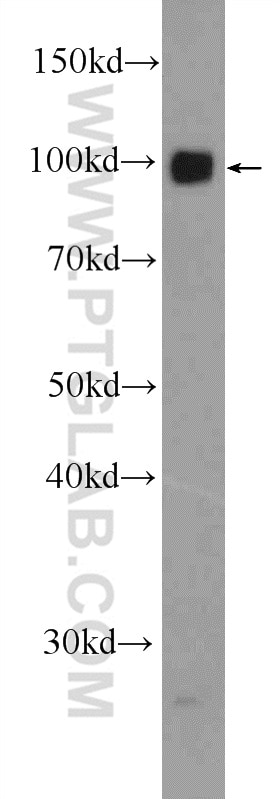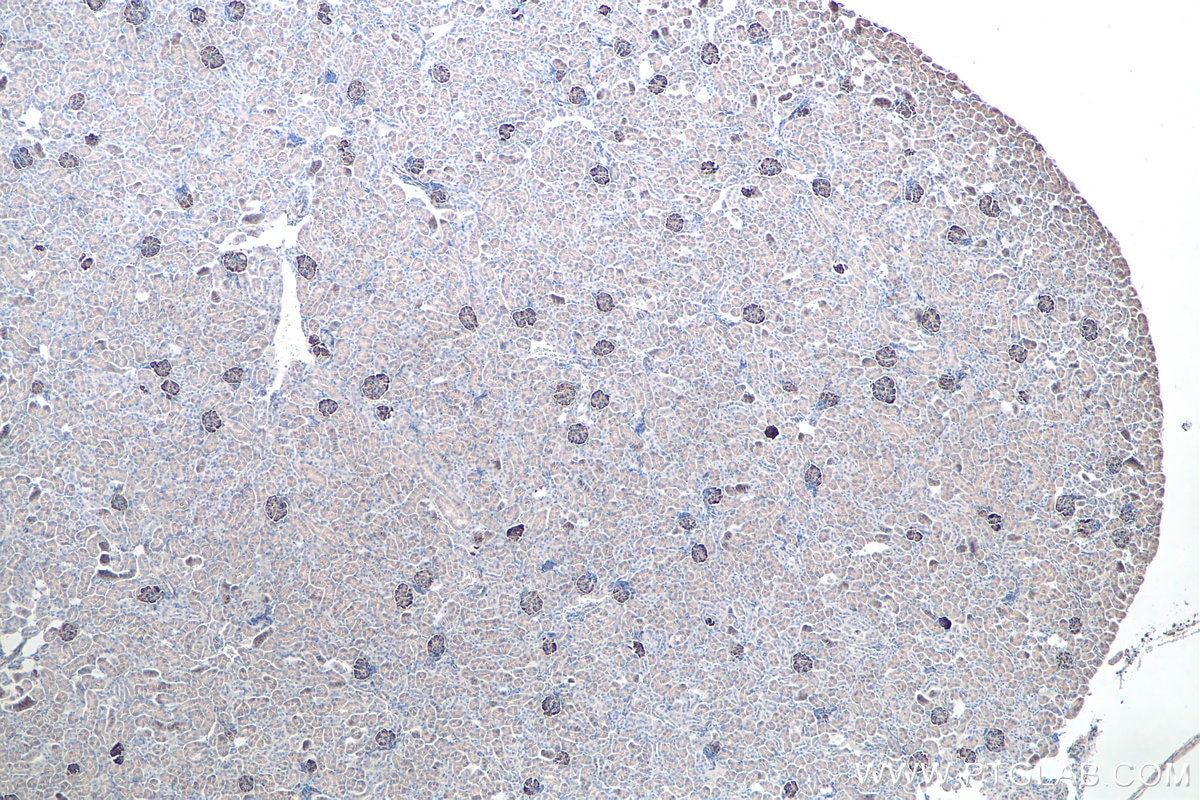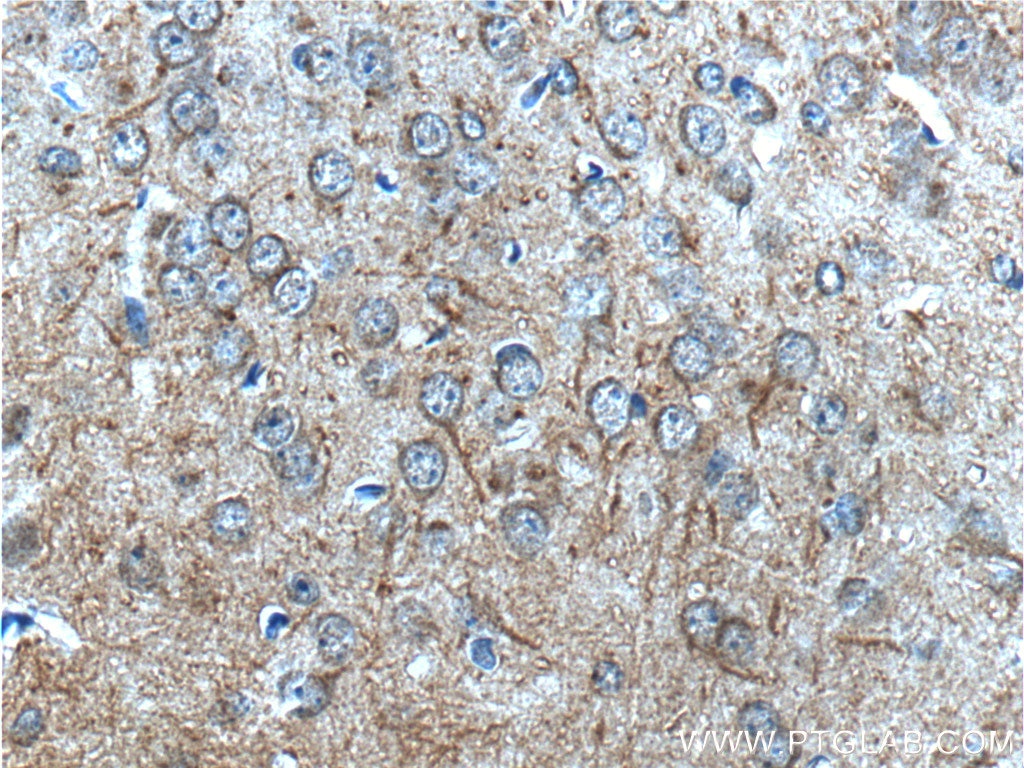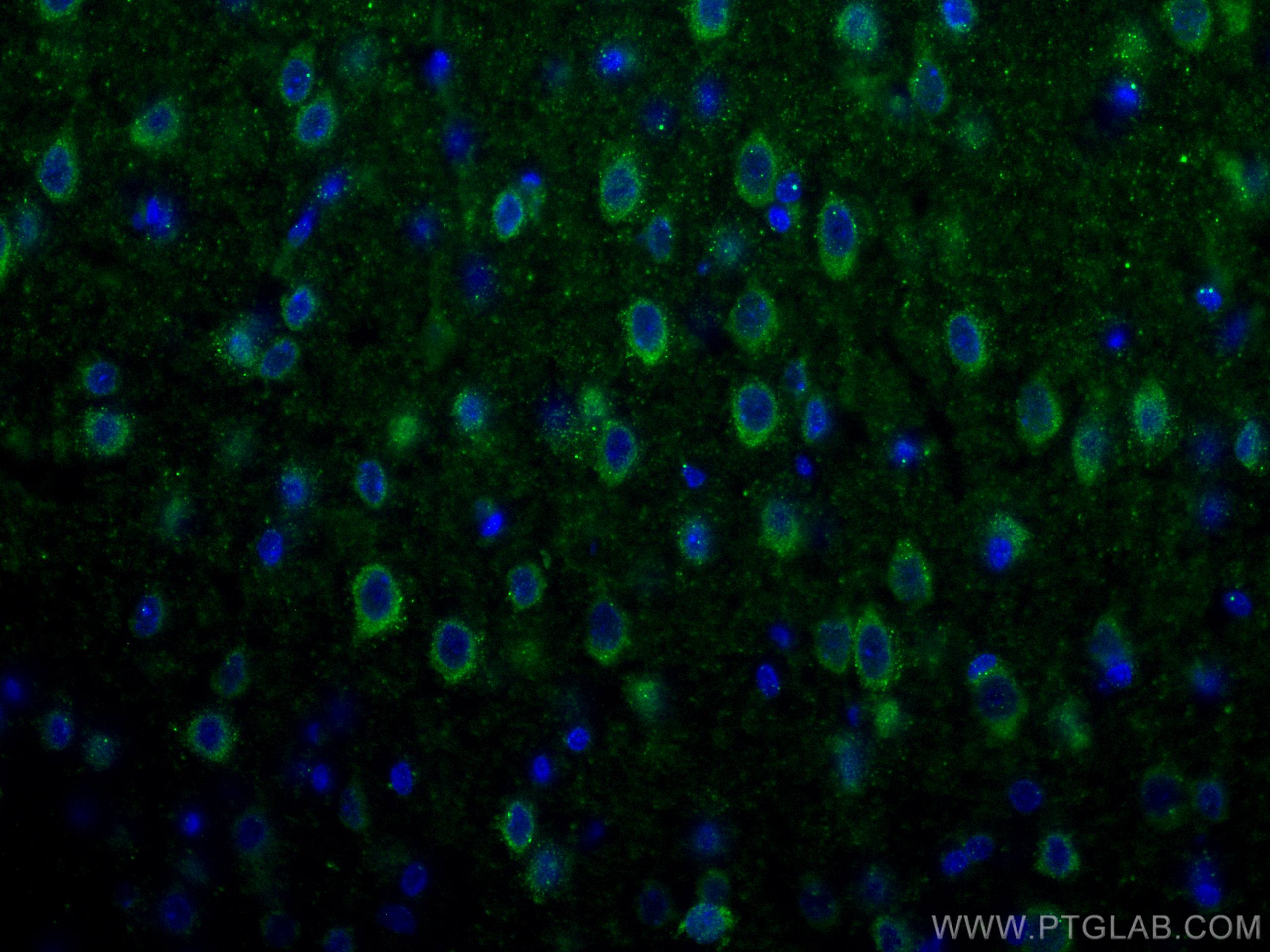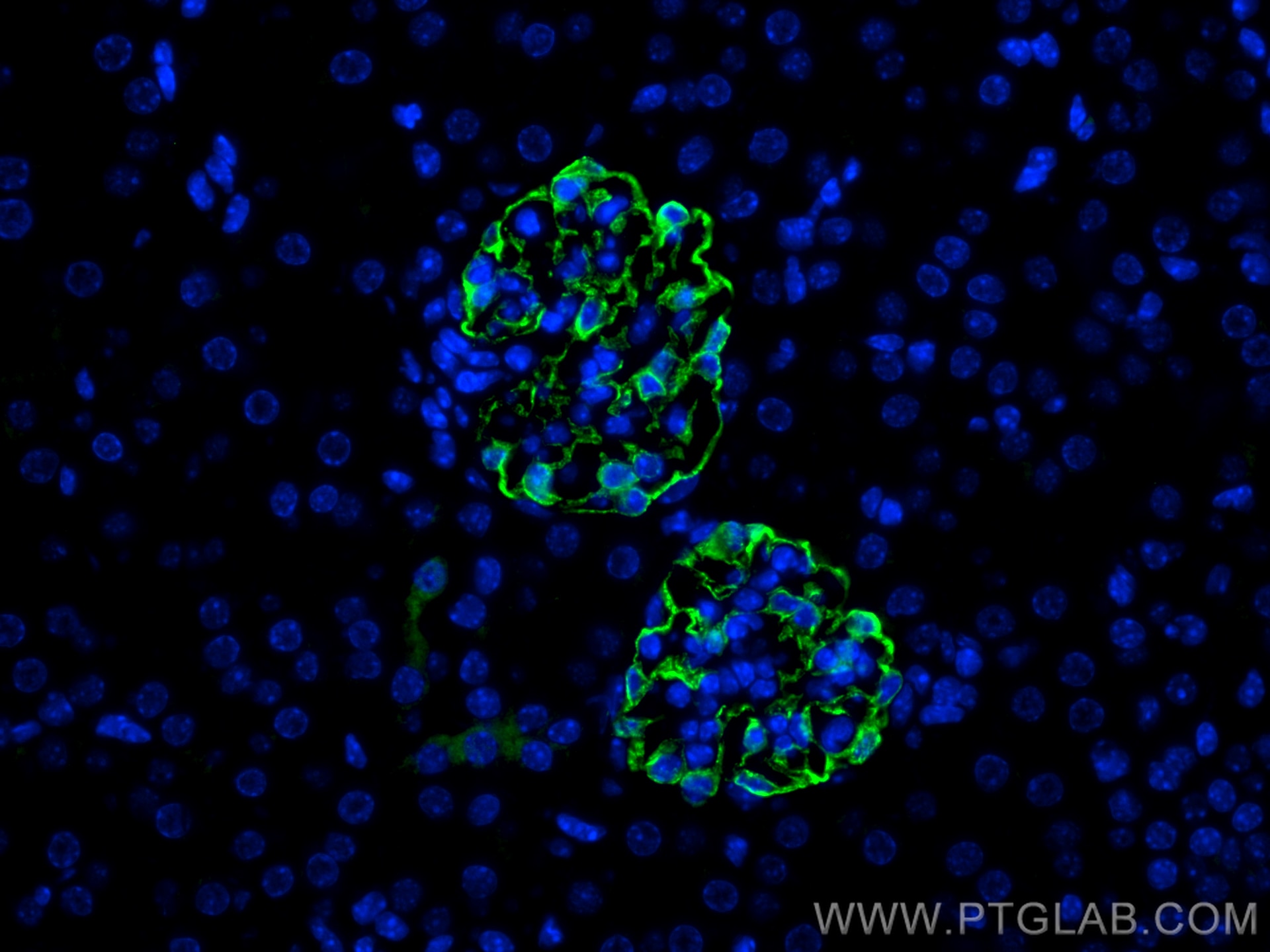Anticorps Polyclonal de lapin anti-SYNPO
SYNPO Polyclonal Antibody for WB, IHC, IF-P, ELISA
Hôte / Isotype
Lapin / IgG
Réactivité testée
Humain, rat, souris
Applications
WB, IHC, IF-P, ELISA
Conjugaison
Non conjugué
N° de cat : 21064-1-AP
Synonymes
Galerie de données de validation
Applications testées
| Résultats positifs en WB | tissu cérébral de souris, tissu cérébral de rat |
| Résultats positifs en IHC | tissu cérébral de souris, tissu rénal de souris il est suggéré de démasquer l'antigène avec un tampon de TE buffer pH 9.0; (*) À défaut, 'le démasquage de l'antigène peut être 'effectué avec un tampon citrate pH 6,0. |
| Résultats positifs en IF-P | tissu cérébral de rat, tissu rénal de souris |
Dilution recommandée
| Application | Dilution |
|---|---|
| Western Blot (WB) | WB : 1:500-1:2000 |
| Immunohistochimie (IHC) | IHC : 1:20-1:200 |
| Immunofluorescence (IF)-P | IF-P : 1:200-1:800 |
| It is recommended that this reagent should be titrated in each testing system to obtain optimal results. | |
| Sample-dependent, check data in validation data gallery | |
Applications publiées
| WB | See 33 publications below |
| IHC | See 8 publications below |
| IF | See 42 publications below |
Informations sur le produit
21064-1-AP cible SYNPO dans les applications de WB, IHC, IF-P, ELISA et montre une réactivité avec des échantillons Humain, rat, souris
| Réactivité | Humain, rat, souris |
| Réactivité citée | rat, Humain, souris |
| Hôte / Isotype | Lapin / IgG |
| Clonalité | Polyclonal |
| Type | Anticorps |
| Immunogène | SYNPO Protéine recombinante Ag15089 |
| Nom complet | synaptopodin |
| Masse moléculaire calculée | 929 aa, 99 kDa |
| Poids moléculaire observé | 99-115 kDa |
| Numéro d’acquisition GenBank | BC146665 |
| Symbole du gène | SYNPO |
| Identification du gène (NCBI) | 11346 |
| Conjugaison | Non conjugué |
| Forme | Liquide |
| Méthode de purification | Purification par affinité contre l'antigène |
| Tampon de stockage | PBS with 0.02% sodium azide and 50% glycerol |
| Conditions de stockage | Stocker à -20°C. Stable pendant un an après l'expédition. L'aliquotage n'est pas nécessaire pour le stockage à -20oC Les 20ul contiennent 0,1% de BSA. |
Informations générales
Synaptopodin is a actin-associated protein expressed in mature dendritic spines and renal podocytes. Several isoforms of synaptopodin have been reported: the 100 kDa neural form and 110 kDa renal form. 44-45 kDa may represent the degradation product of synaptopodin. As a podocyte specific protein, synaptopodin expression level was decreased in kidney but increased in the urinary podocytes from patients with preeclampsia, indicating that synaptopodin is a useful marker for preeclampsia. (15841212, 10555072)
Protocole
| Product Specific Protocols | |
|---|---|
| WB protocol for SYNPO antibody 21064-1-AP | Download protocol |
| IHC protocol for SYNPO antibody 21064-1-AP | Download protocol |
| IF protocol for SYNPO antibody 21064-1-AP | Download protocol |
| Standard Protocols | |
|---|---|
| Click here to view our Standard Protocols |
Publications
| Species | Application | Title |
|---|---|---|
J Extracell Vesicles Quantification of urinary podocyte-derived migrasomes for the diagnosis of kidney disease | ||
Biofabrication A glomerulus chip with spherically twisted cell-laden hollow fibers as glomerular capillary tufts | ||
Theranostics Renal tubular Bim mediates the tubule-podocyte crosstalk via NFAT2 to induce podocyte cytoskeletal dysfunction. | ||
Diabetes Deficiency of Mitochondrial Glycerol 3-Phosphate Dehydrogenase Exacerbates Podocyte Injury and the Progression of Diabetic Kidney Disease. | ||
Free Radic Biol Med P2X7R/AKT/mTOR signaling mediates high glucose-induced decrease in podocyte autophagy | ||
Mol Ther Nucleic Acids Inhibition of the lncRNA MIAT prevents podocyte injury and mitotic catastrophe in diabetic nephropathy. |
